Naming Conegliano will most likely be a quick mental association with the famous Prosecco, a DOCG white wine produced on the hills of this locality in the province of Treviso, as well as in the other geographical area of Valdobbiadene. In fact, the second city in the Marca Trevigiana is home to Italy’s oldest wine school.
Conegliano, however, should not only be named to celebrate one of the prides among the wines of the Veneto, but also (and especially, I might add) deserves attention for its cultural heritage enclosed in a medieval village, the features of which can still be clearly read today.
The town developed around the castle, erected in the 10th century, becoming in the 13th century a free commune and then a seignory. The built-up area thickened over the centuries on the lower slopes of the hill and extended into the outer boroughs: to the east the Borgo Allocco, where craft activities (the mills for wool processing) and the Borgo Vecchio were established; to the west the Borgo di Sant’Antonio and that of Santa Caterina.
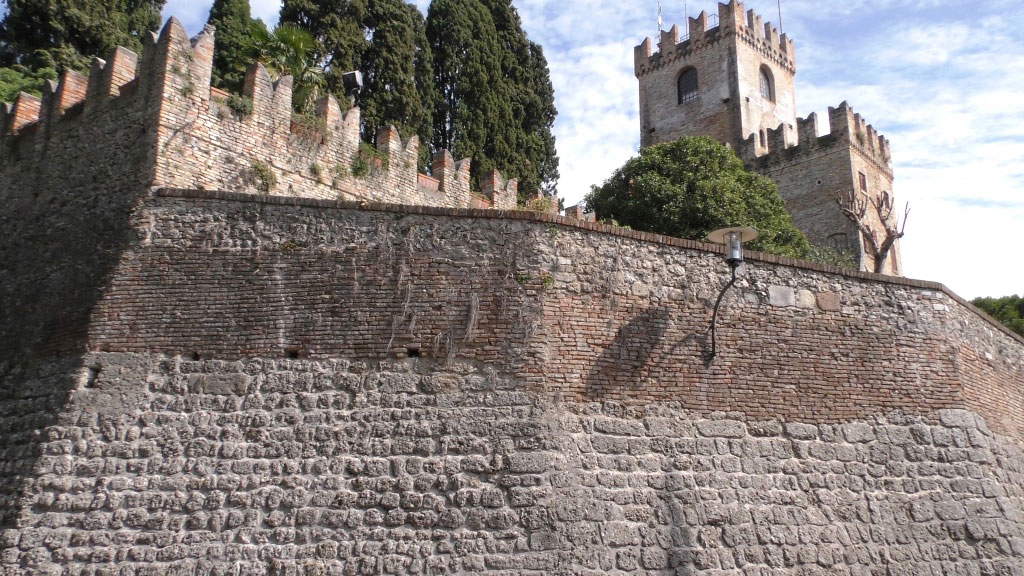 |
| The Castle of Conegliano |
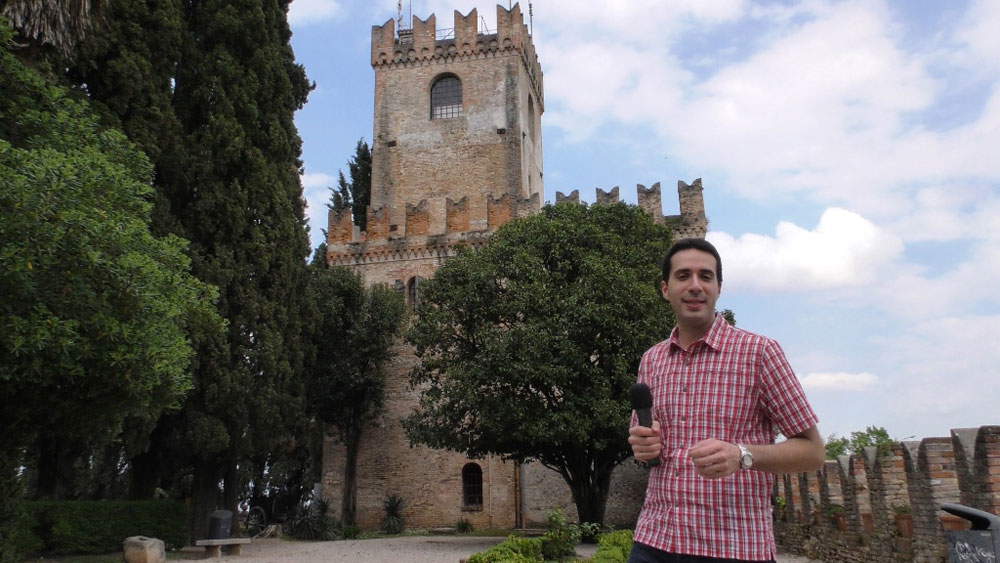 |
| Fabrizio at Conegliano Castle |
The urban structure took on a precise defensive and monumental character following the interventions of the Scaligeri and Carraresi families, still clearly visible in the mighty city walls that rise toward the castle, known as Castelvecchio, inside which today is housed the Civic Museum. Like many Venetian cities, such as nearby Treviso and Verona, from the 15th century onward it was enriched with numerous noble palaces erected by wealthy merchants who used to embellish the facades of their buildings with frescoes, traces of which still remain today (especially in the main street, Contrada Granda, today’s Via XX Settembre).
The most extensive evidence of this technique can be found on the unusual front of the cathedral: a porticoed elevation well integrated with the rest of the buildings. In fact, the facade of the collegiate church is set back from the line of the street and preceded by a large open space that supports on the second floor a large rectangular room, called Sala dei Battuti, named after the confraternity of flagellants that had its headquarters there. This large room is the town’s major attraction and is alone worth a visit to the borough. A pictorial cycle adorns the walls, while some tapestries hang in the adjacent Chapter House.
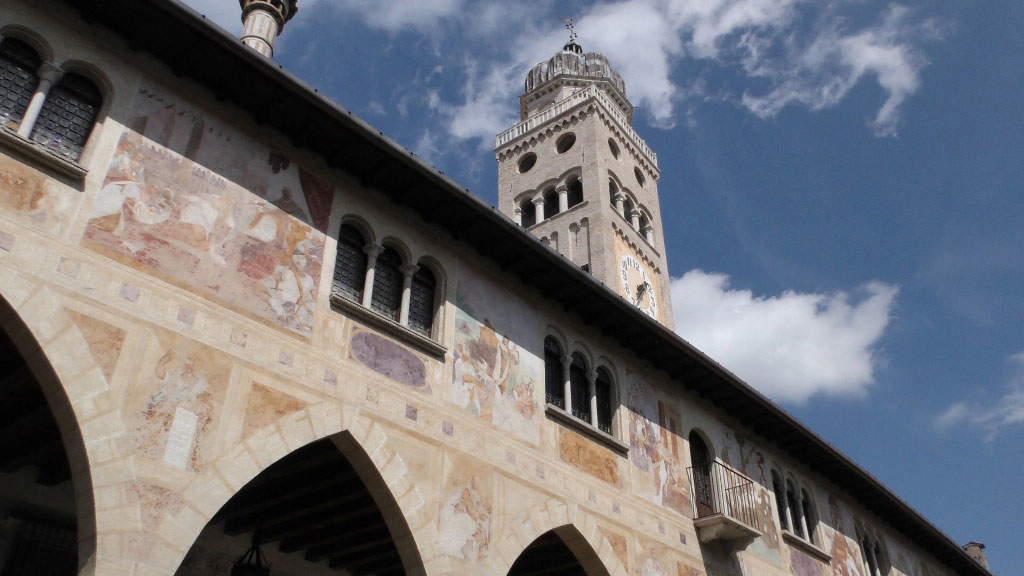 |
| The bell tower and frescoes of Conegliano Cathedral |
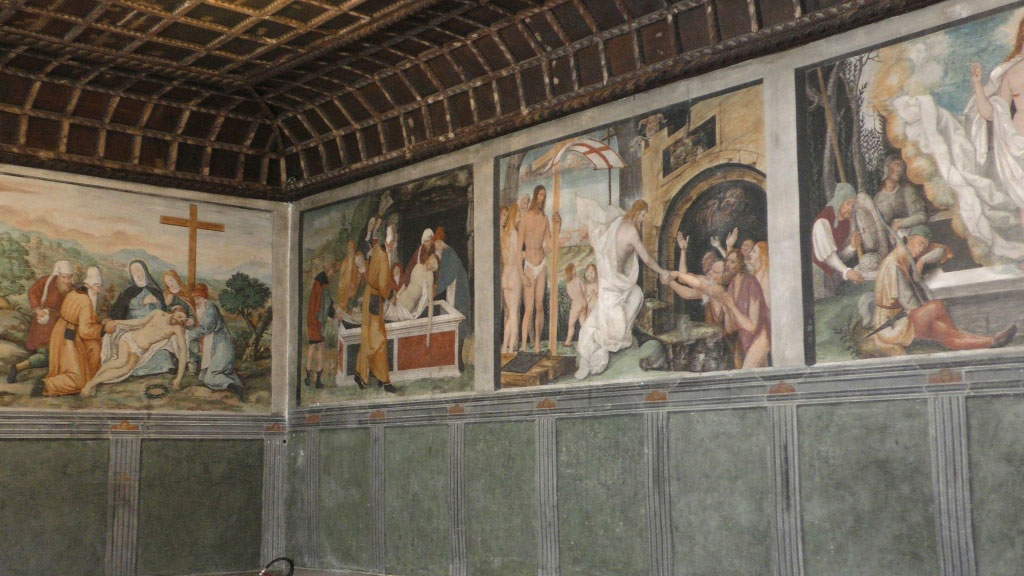 |
| The Hall of the Battuti |
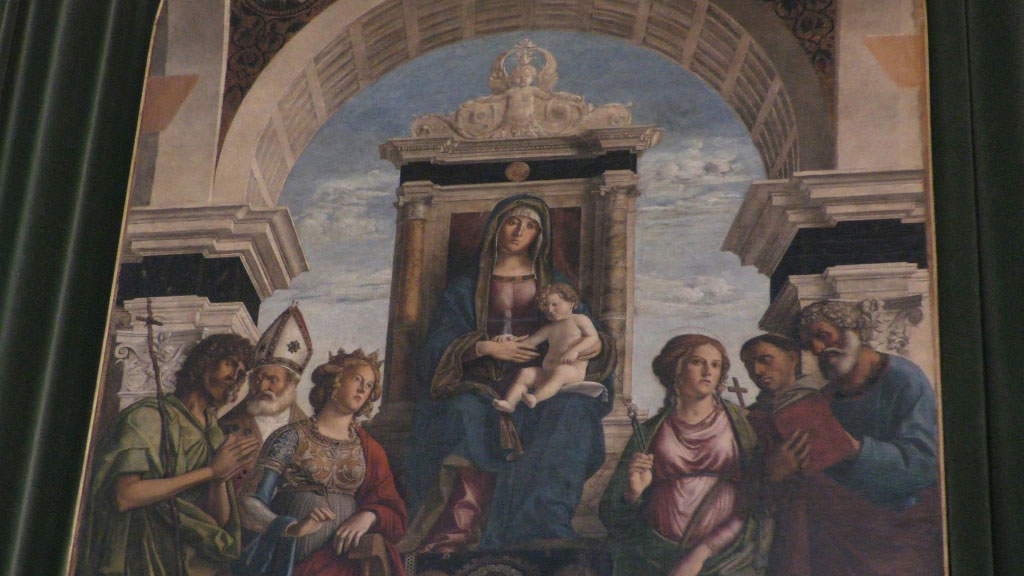 |
| Detail of the altarpiece by Cima da Conegliano in the Duomo |
Finally, we cannot overlook the fact that the borgo was the birthplace of the painter of the Venetian school Cima da Conegliano, who also contributed to the ornaments of Santa Maria dei Battuti and was the creator of the altarpiece (dated 1495) that stands inside the Duomo. For more trivia about the village, I invite you to watch the following video, part of Pronti Partenza Via’s trip series imprinted on those smaller towns that make Italy that varied picture of culture and traditions.
Warning: the translation into English of the original Italian article was created using automatic tools. We undertake to review all articles, but we do not guarantee the total absence of inaccuracies in the translation due to the program. You can find the original by clicking on the ITA button. If you find any mistake,please contact us.